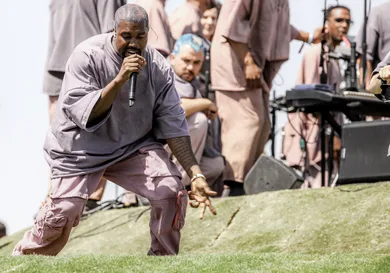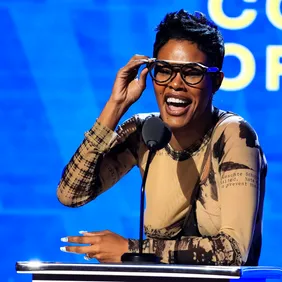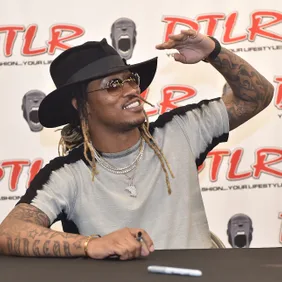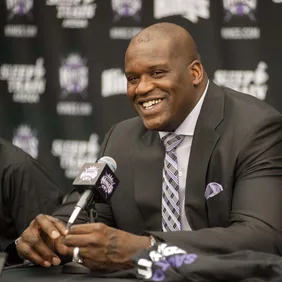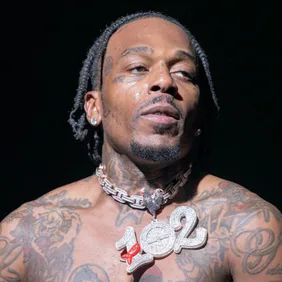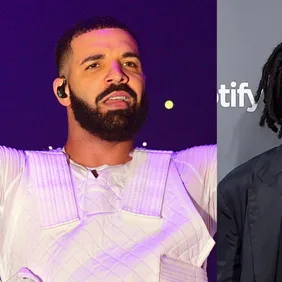June 23rd marks the one year anniversary of Teyana Taylor’s K.T.S.E. and, with that, the end of Kanye West’s infamous “five weeks, five albums” rollout plan that stemmed from what are now dubbed “The Wyoming Sessions.” Despite the excitement most rap fans felt at the prospect of getting five West-produced albums five weeks in a row, the rollout tends to be viewed with somewhat of a collective shrug in hindsight. Considering the albums’ varying levels of quality, it does, however, feel a little unfair to pool them all together. Though it’s true the Grammy-nominated DAYTONA got glowing reviews upon release, it often enters the conversation as “the only good album from the Wyoming sessions” rather standing on its own as a great album in its own right (not to mention this notion casts aside Kids See Ghosts and K.T.S.E. completely). The existence of ye and Nasir doesn’t make the other three albums “worse” in a vacuum, but the mediocrity and proximity of Kanye and Nas’s albums certainly affects how the others are perceived. When it comes down to it, West shot himself (and, by transitive property, the other artists involved in the rollout) in the foot from the start with the way he framed these albums— both when it comes to their format and in terms of how he surrounded their release with his personal life and "politics."
Kanye West and Lil Kim at the Teyana Taylor "K.T.S.E." Album Release Party, June, 2018 - Prince Williams/Getty Images
The way an artist frames an album and the expectations set by said framing can greatly affect the way an album is received by the masses. In the digital age, one of the easiest ways an artist can set the stage for a project is how they choose to label it. To use Drake as an example: If You’re Reading This It’s Too Late was marketed as a “mixtape,” Views as an “album,” and More Life as a “playlist.” Despite how they were marketed, there’s not much that differentiates the three projects from one another in terms of presentation other than how Drake decided to label them. Calling If You’re Reading This a mixtape allowed him to taper expectations for the project, framing it as more of a collection of bonus cuts as fans eagerly awaited his would-be opus, Views From the 6. Similarly, marketing More Life as a “playlist” helped take the pressure off Drake in the wake of fans’ disappointment following the release of Views (it’s just a playlist, not an album, after all!!!). On the flip-side, the relatively long lead-up to Views and the way it was hyped was part of its downfall, with fans expecting his best work to date.
With this in mind, framing ye as “Kanye West’s 8th Studio Album” makes it an inherently big deal. West is an artist who, until that time, had innovated and impressed at nearly every turn and had yet to release an album that was widely considered a flop by fans and critics alike. Quality aside, ye feels minor in the scope of his career (EP-length projects tend to feel more minor by nature), and it easily could have been framed as such. Anyone who followed the release of My Beautiful Dark Twisted Fantasy was probably reminded of G.O.O.D. Fridays when they heard about Kanye’s plans to release back-to-back-to-back-to-back-to-back albums last year. During the rollout, Push and Ye offhandedly mentioned how they were making these albums in “real time,” with Push even going so far as to reference G.O.O.D. Fridays by name in an interview, stating that they couldn’t do them the same way anymore because it’s standard procedure for many artists to drop a song every week.
Kanye West and Swizz Beatz at Nas' "Nasir" Album Listening Session, June, 2018 - Johnny Nunez/WireImage/Getty Images
It would have been simple for West to state that he was bringing back G.O.O.D. Fridays for summer 2018 in EP form, which would hammer in the point that these albums were largely being created and finished on the fly. Thought it’s true that, from an objective standpoint, calling these albums “G.O.O.D. Friday EPs” wouldn’t make them any better or worse in terms of quality, it would have made ye and Nasir feel more minor in the long run; flashes in the pan that were made simply for the sake of being made. But when you wait two and a half years for “Kanye West’s 8th Studio Album” after being promised TurboGrafx16, a Drake collab album, and 40 songs apiece with Kendrick Lamar and Young Thug all the way back in 2016, and end up with an album that was scrapped and restarted a month prior to its release and finished the day of the listening party (with artwork that consists of a photo that was taken on the way to the party no less)-- it leaves a lot of room for disappointment.
And then, of course, there’s the unfortunate way West framed the rollout in terms of himself. West’s detractors have always been vocal, but the backlash to his comments about slavery, Trump, and "ree-thinking" was the first time his critics have been entirely founded. The only other time backlash affected him this negatively was the fallout that happened post-Taylor Swift incident. Afterward, West delivered what is widely considered to be his best album, My Beautiful Dark Twisted Fantasy as, in his own words, a “backhanded apology” for snubbing Swift at the Grammys, something that doesn’t matter at all in any shape or form. Kanye’s behavior has always been erratic and his worldview somewhat inconsistent, but it was hard to believe that the same person who said “George Bush doesn’t care about black people” on live national TV could go from making a song called “New Slaves” that savagely tore down the prison industrial complex to saying that slavery was “a choice” in a matter of years. This rightfully led many fans to believe we would get answers and explanations with regard to his recent views on the album, or at the very least, were being set up to receive another “backhanded apology” in the form of decent music. There had to be something more to the picture. Instead, we got bad Me Too takes, West seemingly only feeling bad about his comments because it might “fuck the money up,” and chipped teeth like Frito-Lay. But alas, none of us would be here without cum.
Kanye West wears a M.A.G.A. hat while visiting President Trump at the White House - Oliver Contreras/Pool/Getty Images
To be clear, ye being a great album wouldn’t excuse his comments, but the discourse surrounding it certainly would have been a lot different. Whether or not Kanye specifically meant his Trump tirades as marketing for the album, it’s how the album was marketed. Likewise, it doesn’t really matter whether or not Kanye likes, understands, or even knows anything about Trump’s actual policies and what he represents— the fact of the matter is that it’s damaging and stupid either way. At the end of the day, nearly everything about the rollout was arbitrary: seven is an arbitrary number of songs to have on an album (an idea that was thrown out the window anyway when K.T.S.E. clocked in at eight tracks), supporting a political figure is arbitrary if you know nothing of and don’t care about their policies, and writing “I hate being bi-polar its awesome” on your album cover is arbitrary if you’re barely going to address it on said album.
Though the oft-delayed Yandhi demonstrates that maybe West did learn something from the experience when it comes to the arbitrariness of release dates and album length, he continues to pop into the public eye every few months to double down on his problematic views. West has always liked being the center of attention, but before 2018 it was easy to believe that he was just a poor extemporaneous speaker who often put his foot in his mouth— but was someone really did care about more than just himself, despite his inconsistent, erratic, and egotistical behavior. It could be argued that we shouldn’t look to artists to be our heroes or role models (especially when it comes to politics), and that sentiment probably holds some weight— but the unfortunate truth is that, in the age of social media especially, it’s nearly impossible to separate the art from the artist.
